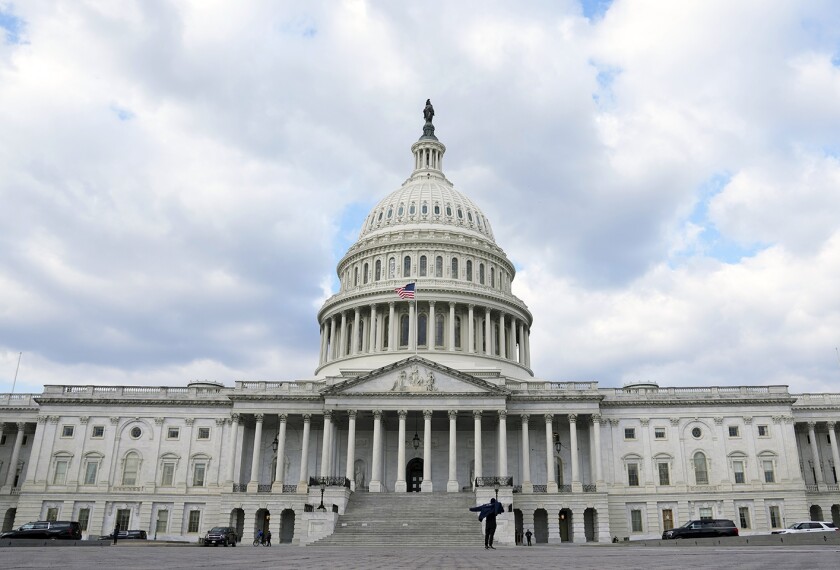State education agencies have spent most of their COVID-19 relief funding on accelerated and extended learning time, such as tutoring and after-school programming, according to the Council of Chief State School Officers.
The council—which represents states’ top education leaders—spent the third day of its 2023 legislative conference in Washington highlighting how states have spent the federal funds that Congress allocated to help schools navigate the pandemic. While states have dedicated the majority of their funding to tutoring and after-school programs, some states have been more creative, building programs that support mental health, giving students a voice in how money is used, and greatly expanding academic support.
Most of the $190 billion Congress allocated through ESSER I, ESSER II, and the American Rescue Plan went directly to local districts. But state education agencies were able to reserve about 10 percent, or $19 billion, for state-run programs.
Nearly $4.3 billion of those funds paid for tutoring and accelerated learning programs, according to the CCSSO data. Here’s a breakdown of how states spent the rest of the funds:
- $3 billion to out-of-school and extended learning programs,
- $2.01 billion to supplement local funds,
- $1.45 billion to hiring school personnel, and
- $1.38 billion to curriculum and instruction, among other uses.
Ohio and Tennessee expand high-impact tutoring
The pandemic led to record losses in student reading and math achievement, with students falling behind by about five months in math and four months in reading, said Nancy Waymack, director of research partnerships and policy at National Student Support Accelerator, an organization that provides resources for schools looking to implement high-impact tutoring.
High-impact tutoring can be one of the most effective ways to help students recover from such losses, Waymack said during a panel at the conference. Studies have shown that students can gain up to 15 months in additional learning after participating in high-impact tutoring, Waymack said.
“These programs focus on consistent, well-supported tutors, a high dosage and frequency of tutoring, well-aligned high-quality curriculum, using data to drive instruction, and tutoring that is embedded into the school day,” she said.
Ohio and Tennessee both used their ESSER funds to build tutoring programs that meet those qualifications. In Ohio, the state education agency allocated $20 million to a statewide math and reading tutoring program that uses tutors from teacher-preparation programs in 33 of the state’s colleges and universities, said Stephanie Siddens, the interim state superintendent. The state created internal and external dashboards to track student performance and address needs as they arise.
Tennessee created a similar program called ALL Corps, which invested $200 million in high dosage small group tutoring for K-8 students. The state used the results from its first year, which showed that students in the tutoring program had higher test scores than students who weren’t enrolled in the program, to convince the state’s legislature to establish permanent funding for ALL Corps, Tennessee Commissioner of Education Penny Schwinn said.
The Tennessee program ensures each school has a full-time on-campus tutor, who is then able to fill in for teachers when there are vacancies, Schwinn said.
“From a mental health perspective, we’re seeing significantly better outcomes because there’s not just one person who’s connected to that child,” Schwinn said.
Illinois trains teachers on trauma support
The Illinois education department used the federal relief money to launch its Resilience Education to Advance Community Healing,or REACH, initiative, which trains educators, school mental health professionals, and community members to recognize signs and symptoms of trauma in students.
The program was originally launched in 2020 with an $800,000 federal grant to help fund the creation of community learning centers in 52 schools. The state then invested $11.5 million from its COVID relief funds to create seven regional hubs where teachers can learn about trauma-informed practices, state Superintendent Tony Sanders said during a panel about the program.
The state has also invested $90 million in a grant program that provides funds to districts to strengthen relationships between schools and their communities so there can be more conversations around mental health.
“When the pandemic hit, educators were desperately seeking strategies to support their students,” said Mashana Smith, director of the REACH program and a clinical psychologist. “At the same time, they were in need of support for their own personal and professional resilience. REACH is in response to that.”
Schools have been able to use the resources provided through REACH to assess student trauma levels, rework schedules to allow for staff mental health days, and create new programs to support student well-being.
“We knew we had a problem, but we really didn’t have the tools or the language to quantify the problem,” Amy Blomberg, principal of Broadmeadow Elementary School in Rantoul, Ill., said during the panel. “REACH really gave us those tools.”
Connecticut lets students choose how to spend funds
High school students in Connecticut got the chance to have a say in how $1.5 million of the state’s ESSER funds would be spent through a competition called Voice4Change. In each participating school, students developed proposals for how they thought their school should spend $20,000 in federal funds.
The schools were able to decide how the competitions would operate. At Danbury High School, students created campaign videos for their proposals and voted on Google forms for which proposal they thought would be best.
Chapal Bhavsar, a former Danbury student, who graduated in May, was able to secure funding for 12 new water fountains in his school through the program. Bhavsar said he and his classmates created a commercial depicting how difficult it was for students to access water fountains by showing images of people climbing Mt. Everest, crossing the Sahara Desert on camels, and whitewater rafting up a river.
Bhavsar said the program allowed him to exercise creativity and learn how to be an advocate for himself and others.
Voice4Change “really played a large role, not only in high school but also now in the future, in my university,” Bhavsar said. “And isn’t that what education is truly all about?”






